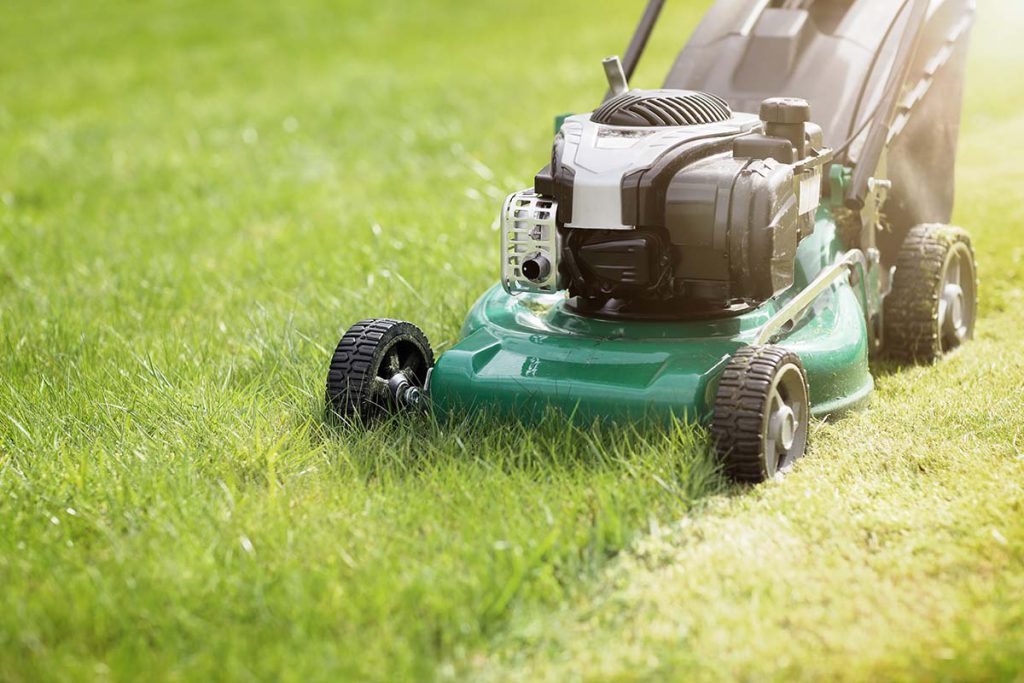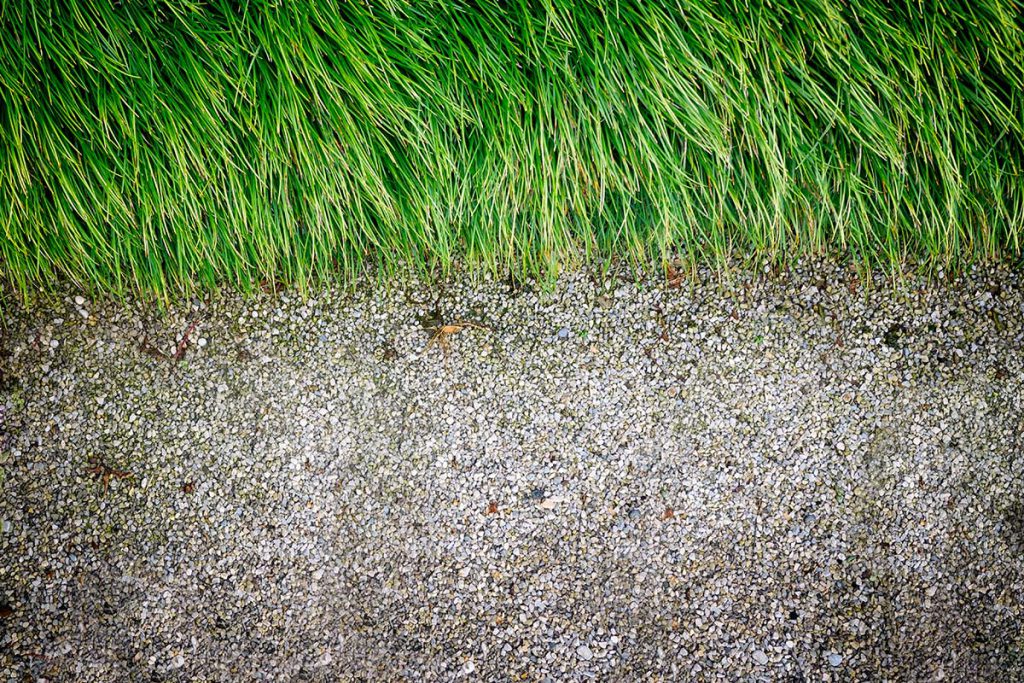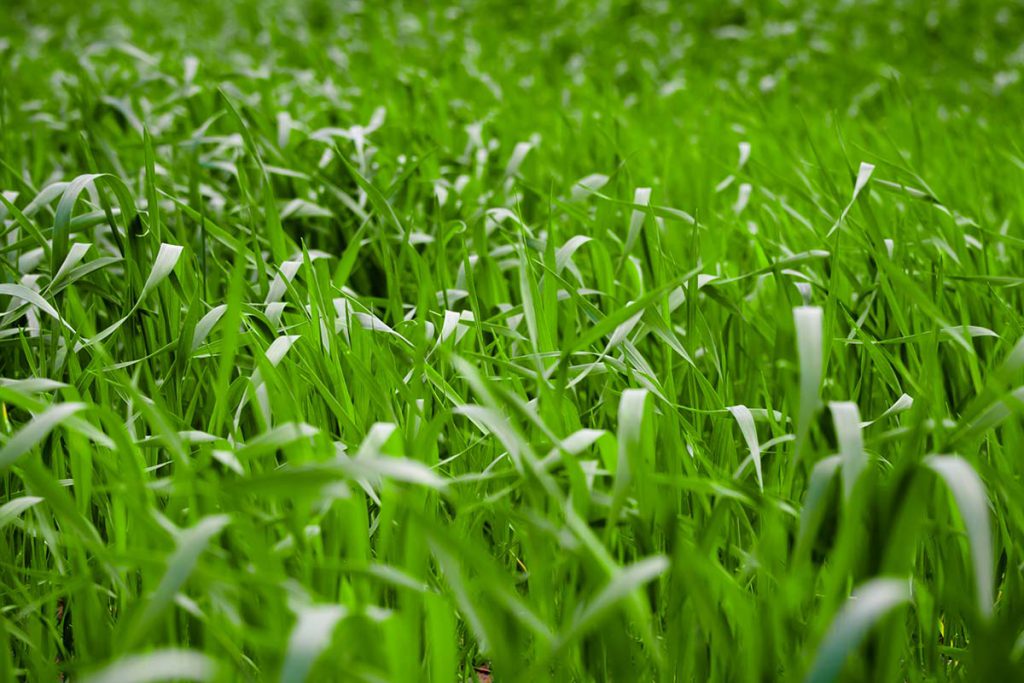There is certainly a fine art to fertilising your lawn as using too much of it can damage or even kill your lawn and the surrounding garden plants. It’s frustrating and scary when this happens because your first thought is that you may have damaged it beyond repair. If you have noticed your grass browning off after fertilising it, then this is the article for you. We are going to address the questions: “what is fertiliser burn, why does fertiliser burn grass, how long does it take to recover, and how can I prevent it from happening in the future”?
First things first, what is fertiliser burn? In a nutshell, fertiliser burn is a condition that occurs when over fertilising a lawn resulting in the burning or ‘scorching’, and discolouration of the grass.
Why does fertiliser burn grass?
Fertiliser can burn grass when it is applied too heavily, or when applying fertiliser to wet foliage. The fact is fertiliser contains salts that will ultimately draw moisture out of plants. Thus, when you apply an excessive amount of fertiliser to your plants, it can cause root damage, and a yellow / brown colour to the leaves.
Fertiliser burn symptoms tend to appear after a day or two, though this can take a few weeks if you have applied a slow-release fertiliser to your lawn. The main symptoms of fertiliser burn include the yellowing, browning, and withering of leaves. When it comes to the lawn, you may even see white, yellow, and brown streaks that follow the pattern in which the fertiliser was initially applied.
Technically speaking, the fertiliser doesn’t burn grass, however, the salts suck the moisture out of the leaves, rendering them brown and discoloured which gives them a scorched look.
Will fertiliser burn grass recover?
The good news is that grass that is suffering from fertiliser burn can indeed recover. However, you will need to take immediate action. If you leave your grass and hope for it to recover by itself, the likely outcome is that it will wither and die beyond repair and you will end up having to invest in some new turf and start from scratch.
If you are reading this and you suspect that your lawn is currently suffering from fertiliser lawn, then don’t panic. Next up, we’re going to tell you exactly what you need to do to rectify the situation. Following that, we will share some tips on how to prevent it from happening again in the future!
How do I fix my lawn burn from fertiliser?
So, you’ve over fertilised your plants and they’re looking brown and discoloured? The first thing you need to do is treat the area as soon as possible. The only thing that you can really do for over fertilised soil is to flush the soil out with as much water as it can hold, over the next couple of days. You must also make sure that the water doesn’t run off. This is because the runoff from an over fertilised lawn can be toxic and will contaminate other areas. Additionally, it may even enter waterways where it can cause some serious damage to our environment, so please be extremely careful when you do. The best approach is to water the lawn slowly and allow the water to sink into the soil, as opposed to running off. We understand the desire to get it done as quickly as possible but allowing the water to run off with the fertiliser is careless and dangerous. Take your time!
How long does it take for fertiliser burn grass to recover?
After leaching the fertiliser from your grass, the likelihood is that your lawn will take several weeks before any visible health will return to the plant.
How can I prevent fertiliser burn in the future?
First things first, if you are fertilising your lawn and you suspect you may have overdone it, you can treat spillage by simply scooping up as much of the fertiliser as possible. This followed by some thorough watering of your lawn should do the trick.
Now, the good news is that you can indeed prevent fertiliser burn from occurring altogether. So, you can learn from your mistakes this time around, and then follow these simple steps so as not to make the same mistake again. Don’t worry, most new lawn-owners make the very same mistake so it’s nothing to be ashamed of.
Here are some tips for preventing fertiliser burn in the future:
- Endeavour to fertilise each plant according to its individual needs. Contrary to what you might think, you do not get better results for using more fertiliser than is recommended and you will indeed run the risk of damaging or killing your plants. In theory, more fertiliser sounds great, in actuality, it is very dangerous.
- Slow-release fertiliser can help to reduce the chances of your fertiliser burning the plants as it releases the salts into the soil gradually as opposed to all at once. Bear in mind that just because it is a slow-release, it doesn’t mean that you don’t have to worry so much about how much you apply. Be conservative with your application for the best results.
- Alternatively, you can fertilise your plants with compost which will eliminate the risk of fertiliser burn altogether. Most plants will thrive wonderfully when fed with at least 1 to 2 inches of compost once or twice a year. That, and it’s a great and effective way of disposing of your food waste. Not only will you be doing your bit for the environment, but you can save yourself the headache of fertiliser burn altogether. Something to consider.
- Remember that plants become much more susceptible to being burned by fertiliser during periods of drought. This is due to the fertiliser becoming significantly more concentrated within the soil.
- That being said, you mustn’t apply fertiliser to wet lawns either. Too much water can be dangerous to wait for the moisture conditions to improve before fertilising. You must also make sure that fertiliser doesn’t come into contact with wet leaves.
- Only following the granular fertilising process should you water your lawn deeply. This will rinse the fertiliser off the plants and subsequently allow the salts to evenly distribute themselves within the soil for the best possible results.

Conclusion
Yes, fertiliser burn can be treated and no, it isn’t the end of the world. Your grass should take a couple of weeks on average to recover fully from fertiliser burn. Take care to flush the soil out but be mindful of runoff. Follow the preventative steps mentioned above and you shouldn’t run into this issue again. If you find that your lawn isn’t recovering properly and is perhaps beyond repair, you may need to start from scratch. In such a case, there are plenty of reputable turf suppliers on the market. Otherwise, we wish you the best of luck and a speedy recovery for your beloved lawn!



